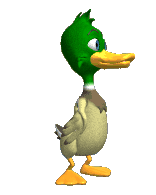
The Reading Hut®
"On a mission to inspire every child to read, learn, and find joy in words. To achieve this, we must stop making learning to map words so difficult for so many."

The Code Mapping® Tool.
The World's first Orthographic 'Code' Mapping Tool: Mapped Words® show the Graphemes in English Words. Try it on the Letters and Sounds Phase 1site
This makes learning to read and spell far easier as the code is made VISIBLE and easier to crack!


We are Code Quackers!


Phonemic awareness at school entry is the strongest predictor of future reading success and helps safeguard against the risk of failure by equipping children with the foundational skills needed to decode and recognise words, with or without phonics instruction.
Parents can do this at home!
Getting Started
LettersandSoundsPhase1.com
Avery (3-year-old is learning about 'bodies' at the moment! Because of the Phonemies (Speech Sound Monsters) he can explore the Speech, Spelling and Meaning at the same time, building on existing schema, to store the word in his orthographic lexicon.
"schema" refers to a cognitive framework or concept that helps organise and interpret information.
He easily understands the mapping of words - including 'sight words'
Letters and Sounds : Phonics with Phonemies! - Speech Sound Monsters.
The Whole Alphabetic Code Shown: All Spelling Choices for Every English Speech Sound in 90-Second Clips!
Visit LettersandSoundsPhase1.com to get started! The Universal Spelling Code Shown
The Playlist on Youtube
Understanding the WHOLE Alphabetic Code will help you use MySpeekie !
MySpeekie® – the world's first one-screen AAC tech for children who cannot (yet) read or spell!
Type the speech sounds using Phonemies, click to see the written word(s), and hear it spoken aloud!
It's also the perfect way for toddlers to teach themselves to read and spell — while expanding their language skills, too.
Which words will you explore today?
#MyWordzwithMySpeekie
Use our new Innovate UK Funded tech to 'Show the Universal Spelling Code with Phonemies'!
Because every child deserves to know how words work!
Show the Code : Phoneme-Grapheme Mapping Made Visible
10 Day Getting Started Plan Here
LettersandSoundsPhase1.com

How do we know this little tot isn’t at risk of dyslexia?! How early can we find out — and prevent reading and spelling difficulties, while embracing their amazing minds?
Dr Grace Elliott and I presented at the World Literacy Summit in Oxford.
We talked about our new Early Dyslexia Screening CIC.
I also get to play with MySpeekie® alongside folks who are excited about Communication without Frustration! It’s the world’s first one-screen AAC — no picture symbols, no written words. Children can get any words or sentences voiced without needing to know any letters or their sounds!
It is also a fantastic tool to develop phonemic awareness and phonological working memory!
New: Emma Hartnell-Baker's Letters and Sounds Phase with Phonemies
– 10-Day Sound Play Plan launched in response to the new Delphi Dyslexia Definition

Why Letters and Sounds Phase 1 Must Come First — And Why Phonemies Make Learning Schema-Driven
During the DfE’s validation process, synthetic phonics programme developers were advised to remove Phase 1—on the assumption that phonics instruction would naturally develop phonemic awareness along the way. But for many children—especially those at risk of dyslexia—that’s setting them up for difficulties. It makes the process frustrating, and they lose confidence before they've even begun.
The Delphi Dyslexia Definition highlights that difficulties in phonemic awareness and phonological working memory are at the heart of dyslexia. Yet most children starting school this September will dive straight into letters and sounds, without first checking whether they can actually hear, isolate, or manipulate phonemes in spoken words. For children who struggle to hear the speech sounds in words, connecting those sounds to letters—especially as the code becomes more complex—can seem daunting. We must FIRST screen and intervene.
That’s where our Letters and Sounds Phase 1 with Phonemies: 10-Day Plan comes in. It has been used across Australia for years, by Speech Sound Pics (SSP) Approach teachers, and makes a significant difference across the whole curriculum.
Children learn to use Duck Hands, Speech Sound Lines, and Numbers to identify and order speech sounds. Phonemies provide a visual hook that represents only the speech sound—just like IPA phonetic symbols—and makes sense of all words from day 1, including their names.
By Day 5, the first six focus speech sounds have been linkeed to 'Sound Pics' - graphemes - and by Day 10, all children—including those who are non-speaking or neurodivergent—are already decoding and spelling words using s, a, t, p, i, n.
Our plan builds the 'sound foundations' children need before letters are introduced, making the learning process schema-driven and far more effective. Skipping this step means many children will struggle. Starting here gives every child a sound start. Importantly, it introduces some really complex concepts to autistic children in a way that they will not experience elsewhere. It has been designed by Miss Emma, the Neurodivergent Reading Whisperer, who is, herself, AuDHD.


'Word Mapping Mastery®'
The discovery journey towards orthographic mapping #Playknowlogy
Written by the Neurodivergent Reading Whisperer®
Word Mapping Mastery:
-
Understanding MySpeekie® – NextGen ONE-Screen AAC
-
Little Mappers – Reading at Three with Mapped Words®
-
Screening Three-Year-Olds to Defy Dyslexia with MAPS
-
Ensuring that Children at Risk Learn to Read in the Way Their Brains Learn—Before Starting School
-
Understanding How Brains Learn to Read and Spell (and why popular methods make it so hard for so many, especially if neurodivergent)
-
Adding 'Authographic Mapping' to Your Vocabulary – Demonstrating an Awareness and Celebration of Ausome Autistic Pattern-Seeking Minds
-
Creating AttentiA within the Neurodiverse Classroom – Fostering an Intrinsic Desire to Engage with Spoken and Written Words
-
Teaching a Whole Class of 4–6-Year-Olds to Read in Less Than 18 Months
Using 'Speech Sound Pics'—even if most started school with no English or are non-speaking -
Incorporating Activities Throughout the Day with Words That Matter to Children
Short, engaging exercises that boost reading and spelling skills -
Screening Teachers of Phonics for Word Mapping Proficiency (it's hard when you can already read!)
And more!
What is MySpeekie?
For the first time, very young children can type on a 'speech sound' keyboard, see any word they build appear, and hear it voiced. Fabulous for non-speaking autistic children!
Avery is learning how words work by exploring words that matter to him. Speech to text!
This is child-led, personalised learning. To Avery, this is PLAY. He chooses it for fun.
We can identify children at risk of developing dyslexia as early as six months old.
Children are not born with dyslexia; however, many are born at risk of developing it.
Typing words in 'Phonemies' creates new pathways in the brain, allowing us to prevent dyslexia from developing
- even before children begin learning about 'letters and sounds' at school.
Our goal is to screen all children before they turn three, ensuring no child starts school at risk of struggling to learn phonics, read, or spell.
Get involved in this ground breaking initiative as we raise funds to develop a tech-based version of Miss Emma's face-to-face screening. Together, we will launch a national screening project capable of assessing 1.5 million 3- and 4-year-olds annually, analysing data, and supporting 'at-risk' children before they enter the education system and throughout their primary years.
This is Immunisation Against Illiteracy—a transformative step towards dramatically increasing the number of children reading for pleasure. By fostering a culture of reading for enjoyment, we empower literacy to become a powerful catalyst for meaningful, systemic social change.

We create discovery learning tech for NextGen learners! MySpeekie® has launched! Even two- and three-year-olds can type on the keyboard with the Phonemies to create the words they want to see pop up—and have them voiced!
MySpeekie® is designed for all young children and gives non-speaking children a voice!
No more wading through picture symbols or words they can't read—just one screen, fun Phonemies, and 17,000 words already stored in the Mapped Words® Bank!
And it’s not traditional word mapping via phonics as we don’t start with letters! They spell in speech sounds and then see the text. So they can choose any words or sentences!
Which words would you build? Connecting spoken and written words is FUN!
MyWordz®—Discovery Word Mapping! PlayKnowlogy - Now in the App Store!
MyWordz® with MySpeekie®
Speech To Text for All #MyMappedWords
Web Version MyWordz.tech
App Store: https://apps.apple.com/us/app/mywordz-with-myspeekie/id6737770129
Google Play: https://play.google.com/store/apps/details?id=com.thereadinghut.mywordz
Word Mapping Mastery: The Early Years Playbook for Lifelong Learning #playknowlodgy





Orthographic Mapping (OM) becomes easier when graphemes are clearly displayed, accompanied by a phonemic representation for the corresponding phonemes.
Emma Hartnell-Baker's design of IPA aligned phoneme characters introduces a direct and explicit teaching method that transcends the limitations of phonics and picture embedded mnemonics by focusing on grapheme and also phoneme representation without relying on contextual knowledge. This approach promises a more inclusive and effective phonics instruction by accommodating diverse learning needs and facilitating personalised learning.
Strategies for Overcoming Challenges:
-
Integrating a Broader Range of Phonemic Experiences: Expanding the curriculum to include a wider variety of phonemes and graphemes from the start enhances flexibility and engagement.
-
Using Direct Phoneme Representation: IPA aligned phoneme characters (Speech Sound Monsters) offer a clear, universal path to phonemic awareness, overcoming the issues many learners face when being taught with traditional picture embedded mnemonic.
-
Encouraging Personal Connection and Relevance: The phoneme characters enable teachers to adapt and enhance existing materials to reflect diverse experiences. This enhances motivation and fosters a deeper interest in mapping words for reading and spelling.
-
Facilitating Transition to Complex Phonemic Awareness: Visible sound symbols embedded into orthographically mapped words (another unique tool designed by Emma Hartnell-Baker) offers a simple and logical introduction to the variability of phoneme-grapheme correspondences.


